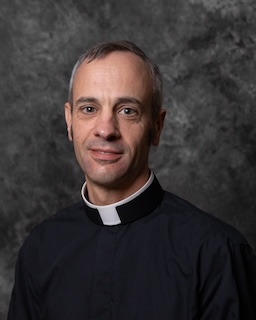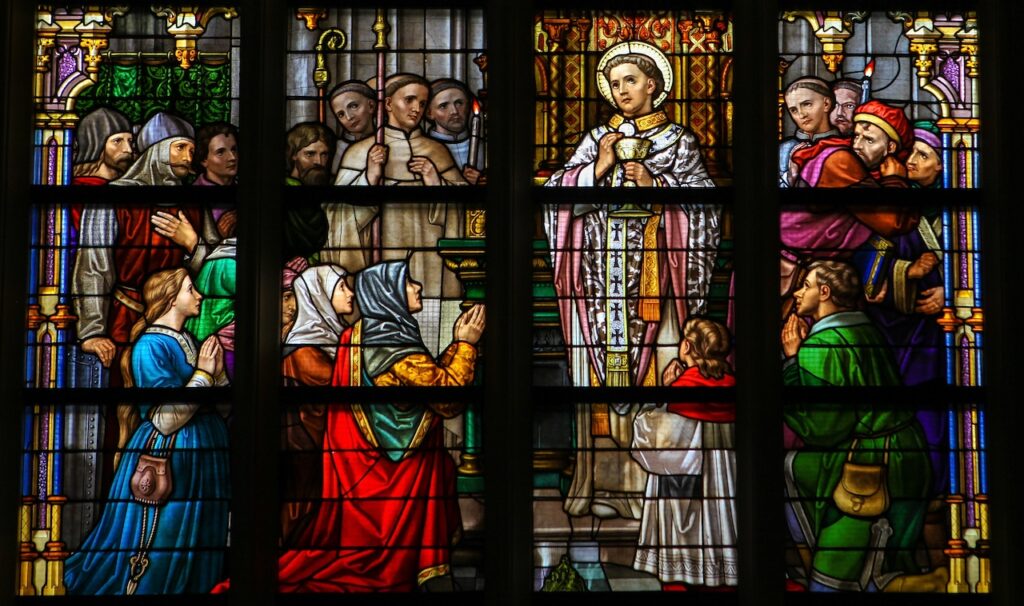The first American-born citizen to be canonized was originally a Protestant: St. Elizabeth Ann Seton (1774-1821). Raised in a devout Episcopal family, she made the momentous decision to join the Catholic Church in 1805. She was not a convert to Catholicism. This is because she was already a Christian. That Christian faith came to fulfillment as she entered the Catholic Church.
A baptized Christian who becomes a Catholic is often called a “convert.” This colloquial usage, however, is theologically inaccurate and can be unintentionally offensive. The National Statutes for the Christian Initiation of Adults state that the term “convert” should only be used for a person who changes his or her religion to Christianity to receive baptism and the other sacraments.
By contrast, a baptized Christian does not convert to another religion in joining the Catholic Church – otherwise Catholics themselves would not be Christians!
The proper theological description of a baptized Christian who becomes a Catholic is that this person is “received into the full communion of the Catholic Church.” He or she may be an Eastern Christian (for example, Orthodox), or, more commonly, a Protestant.
“Communion” (Greek: “koinonia”) is a Biblical word that means “sharing” and “fellowship.” The term has interrelated theological applications. Regarding membership in the Catholic Church, communion designates the bonds of unity forged by common doctrine, sacraments, and governance (authority of the pope and bishops). Eastern Churches and Protestant denominations possess, in varying degrees, some of these elements; they are in partial communion with the Catholic Church.
Since baptism is the foundation of communion, the Catholic Church does not re-baptize a candidate for full communion. (A conditional baptism is administered if there is doubt about the candidate’s baptismal status.)
Likewise, the Catholic Church considers marriage to be valid, under normal circumstances, between baptized non-Catholics, and between a Catholic and a baptized non-Catholic (with the proper permission). That means a married Christian joining the Catholic Church would not typically need to have his or her marriage blessed as it would already be blessed.
Reception into the full communion of the Catholic Church is part of the Order of Christian Initiation of Adults (OCIA). Both the period of instruction and the liturgical rite of reception reflect the candidate’s baptismal status.
This identity is fundamentally different from that of an unbaptized person (catechumen). Normally, a catechumen, following a time of inquiry, undergoes formal preparation for at least one year and then receives the sacraments at the Easter Vigil.
A candidate for full communion, by contrast, only prepares for as long as necessary to enter the Church and receives the sacraments at any time of year.
Prior to being received into full communion, the candidate makes a sacramental confession. Although the candidate is not yet a Catholic, the sacrament of penance ensures that he or she will be in a state of grace to receive the other sacraments.
The rite of reception into full communion includes a profession of faith, typically confirmation, and the Eucharist. The profession of faith is an assent to the Nicene Creed and essential Catholic doctrines. Confirmation follows, unless the candidate has already validly received it (as in the case of an Orthodox Christian). Therefore, while reception into full communion is sometimes limited to confirmation, it may not actually include that sacrament.
Full communion reaches its true apex in Holy Communion, when the candidate receives the Eucharist. In most cases, this will be the candidate’s first Communion (except for Eastern Christians whose churches validly celebrate the Eucharist).
Significantly, the norms for the rite of reception state that, “an air of triumphalism should be carefully avoided.” In keeping with this principle, the rite’s prayers express gratitude for the candidate’s Christian faith and ask for God’s blessing upon his or her former community.
In the case of children baptized in another Christian denomination, those below the age of reason (seven) enter the Catholic Church when their parents do so. Those seven and older receive instruction adapted to their age and follow the same rite used for adults.
Beliefs matter. Saintly people like Elizabeth Ann Seton demonstrate that truth by following their conscience, often at personal cost, to join the Catholic Church. Catholics can honor that testimony in a practical way by how they speak.
Instead of the term “convert,” there are better informal expressions to describe a person’s reception into full communion: “became a Catholic,” “joined the Catholic Church,” “entered the Catholic Church,” or “was received into the Church.”
Those words could help welcome the next new Catholic.
 Father Anthony Marques is the rector of the Cathedral of the Sacred Heart, Richmond.
Father Anthony Marques is the rector of the Cathedral of the Sacred Heart, Richmond.

